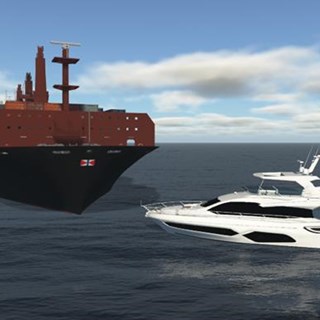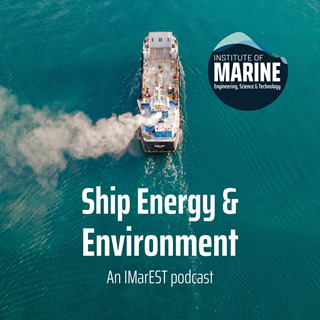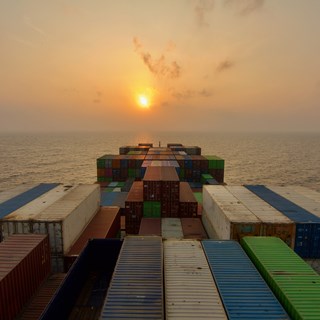
19 February 2024

Maritime autonomous systems (MAS) are often presented as the solution to many challenges in the maritime domain, such as enhancing safety, efficiency, and environmental performance. However, MAS are not a panacea, and they have their own limitations and trade-offs. One of the main challenges in developing and deploying MAS is to balance the requirements and expectations of different stakeholders, such as operators, regulators, customers - and society.
Without a conventional hands-on crew to enable operation outside of a design envelope, MAS are designed and built with specific missions and objectives in mind, to requirements set by a customer, which may not be compatible with changing future needs. An 'off the shelf' system can be bought for one capability with the hope of wider utility, but sometimes it becomes apparent that these aspirations aren't possible with the system as it is. A MAS that is optimised for hydrographic surveying, for example, may not have the necessary sensors, communication systems, or manoeuvrability to perform search and rescue operations. To solve this we adapt the system, bolt on a sensor and away we go… or not. Let's delve into why this isn't always possible.
It is important to avoid unrealistic expectations or hype about what MAS can do and to acknowledge their limitations. A MAS that is equipped with sensors tuned to capturing data of a certain type and nature are unlikely to be self-configurable on the fly to data of a different type and nature. A MAS that is programmed with a predefined set of rules and actions may not be able to cope with unexpected situations or learn from its experience. Artificial Intelligence (AI) is a building block to autonomous systems but its application and capable scope remain task-specific (so-called ‘narrow’ or ‘weak’ AI) rather than context-independent (the so-called vision of ‘general’ or ‘strong’ AI).
MAS are not capable of solving every problem and meeting every need simultaneously, but they can be very useful and effective for certain tasks and applications. To achieve this, it is essential to involve all relevant stakeholders in the design and development process of MAS to ensure that they “fit the bill”.
Adding new capabilities or systems to an existing MAS can be wholly unachievable, as well as extremely costly and time-consuming, especially if the MAS was not built with modularity or scalability in mind. One of the main challenges for MAS is the design and integration of the various components and subsystems that enable their autonomy, such as sensors, actuators, communication devices, power sources, navigation algorithms, and decision-making modules. These components must be carefully selected and configured according to the specific requirements and objectives of each mission, which may vary in terms of complexity, duration, environment, and risk. Enabling flexibility does depend on a vehicle's surplus space, weight, and power (SWaP), which are particularly limited for MAS at the smaller end of the scale (e.g. man-portable systems). On a large vessel it may be quite simple to integrate a new piece of kit, find a place to put it and use some extra power the vessel has to run it, the integration cost is low and you are mostly paying for that new capability add-on (these can vary massively in cost, depending on the case). But with a small vessel, there is minimal or non-existent SWaP surplus and the current reality is that MAS fall overwhelmingly into this latter category. Adding or changing the capability can sometimes only be done by completely redesigning the vessel for the new role, potentially for more effort and cost than starting with a blank sheet and procuring a new vessel.
It is important to recognise that MAS are not a panacea for all maritime problems, at least not all at the same time. Instead, MAS are tools that have to be carefully designed, integrated, tested, and operated according to the specific needs and constraints of each mission. Setting out those needs and the requirements of the system, clearly and fully at the start, is key to this. We shouldn't let the excitement around the possibilities of MAS shroud the realities that time and cost is required to create capable systems. MAS customers and operators need to be realistic about what MAS can and cannot do, so that they are well informed about what a single system can achieve and what it can provide into the future. If we can foster a culture of innovation and collaboration among the different stakeholders involved in the development and deployment of MAS, it may be possible to overcome some of the current limitations and challenges, to enhance their capabilities and potential for the future.
If you are considering the adoption of MAS, or want to make the integration of MAS more efficient, we can help. From working alongside you to define your requirements and operational concepts, to utilising the best asset mix and ensuring MAS are fit for purpose – we apply our independence and expertise to help you realise the benefits of Maritime Autonomous Systems, now and in the future.

Chloe Yarrien is a Maritime Autonomous Systems Engineer at BMT. She graduated Swansea University with a degree in Theoretical Physics before joining QinetiQ to work in mine countermeasures.
Chloe has been at BMT for six years, in which time she has worked on the MoD’s Common Support Model, BMT’s Marine Autonomous Systems Synthetic Environment Assessment Service (SEAS) and as an embedded team member in the MoD Mine Countermeasure and Hydrographic Capability team working on Project Wilton.
Chloe has managed and led a variety of projects and R&D, including thought leadership papers in the autonomy space.

Will Roberts
At BMT, we believe simulation is a critical enabler in overcoming these hurdles—de-risking development, accelerating innovation, and building confidence across the entire lifecycle of autonomous systems.

N/A
Get ready to dive deep into maritime autonomy as we bring you technical experts, insightful opinions, and unmissable discussions.

Dr Thomas Beard
Episode 3 of IMarEST’s Ship Energy & Environment podcast series, addressed the ‘Realities and Challenges of Alternative Marine Fuels. Dr Thomas Beard, Clean Shipping Lead explores the practical side of the 'big four' alternative fuels.

Jake Rigby
We explore the core elements of the support framework required to ensure Persistent Operational Deployable Systems (PODS) can thrive.